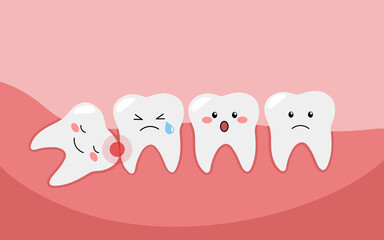
General Dental Care
Here at Orchard Family Dentistry, we are committed to making sure your dental experience is
comfortable, personalized & affordable.
We are part of a A Burlington Tradition Of dental excellence, offering state-of-the-art
general dentistry services. We are conveniently located In Burlington & Oakville & are here for
all
your general dentistry needs. With a focus on family & cosmetic dentistry, we are happy to
help you achieve a beautiful smile in our comfortable, safe & friendly environment. Our team
offer a wide array of procedures, including crowns, dental implants, tooth-coloured
dentistry, sedation dentistry, teeth whitening & more.
-
Low-Radiation Digital X-Ray
These images require up to 90% less radiation than with conventional film-type x-rays.
-
TMD (Jaw Pain) Therapy
A subtle misalignment in the temporomandibular joint can be a common & significant source of head & neck pain.
-
Sedation Dentistry
Wake up to a more healthy & beautiful smile with amazingly comfortable sedation dentistry.
-
Wisdom Teeth Removal
Wisdom teeth are considered third molars and are the last four teeth to emerge after all other adult teeth have grown in
We offer in-office digital x-rays for your convenience
Digital X-Rays
Digital x-rays are computer-generated images.
These images require up to 90% less radiation than with conventional film-type x-rays. Instead of using the traditional silver-oxide x-ray film, which must be developed & then fixed in caustic & environmentally damaging solutions, the new system takes pictures via a small electronic sensor. A picture of the tooth is instantaneously transmitted onto the monitor in the treatment room so we can see your teeth & surrounding structures immediately.
TMD Therapy
Commonly misdiagnosed or overlooked, a subtle misalignment in the temporomandibular joint
can be a common & significant source of head & neck pain. Even some migraines can be
attributed to TMD.
While many cases of TMJ pain or discomfort resolve themselves without major treatment, some
patients will need more long-term solutions. Because TMD can look so different depending on
the patient & symptoms, treatment can also vary drastically, & unfortunately there isn't one
method that works for every patient.
Pain management is often a critical aspect of treatment, as most patients request help with
TMD due to some level of pain. Such patients may find some relief with hot or cold therapy.
Jaw strengthening exercises can also be effective for some—think of it like physical therapy
for your jaw muscles. Pain medication can also be effective for managing pain on a
short-term basis.
TMD Therapy
The temporomandibular joint, or TMJ, is the joint connecting your jaw to your skull. You use
this joint when you chew, swallow, speak, & even yawn—pretty much whenever you move your
jaw.
Jaw pain originating from this joint is commonly classified as a temporomandibular joint
disorder, or TMD, & can be felt in the joint itself or in the connecting muscles. While
classified under one name, TMD can actually be caused by many different things, such as
injury, grinding or pressure, arthritis, misalignment or even stress.
However, pain isn't the only symptom that can indicate a disorder of this joint. Some
patients may notice popping or grinding sounds when moving their jaw. Others might
experience tenderness, stiffness or locking of their jaw. In fact, dentists often look for
more than just pain when diagnosing TMD.
Why Root Canals Are the Right Dental Option
Root Canal Treatment in Burlington
Root canals have a bad reputation but this is a misconception. They are a necessary procedure that is done when the tooth's nerve is diseased or infected. This disease or infection may cause the patient to start suffering from a toothache, swollen or tender gums, extreme tooth sensitivity, or pain while chewing. The goal of a root canal is to try and save a tooth by removing any bacteria or diseased tissue within the tooth root. This prevents infection that is contained within the tooth root from pushing out into the surrounding bone and causing an infection within the jaw. The alternative to root canal treatment is generally extraction of the tooth, but with the high success rate and safety of root canal treatment, it is typically much preferred to keep a tooth rather than remove it.
What Happens During a Root Canal
The first step of a root canal is to take a digital x-ray to see any possible damage or disease
that
is inside the tooth. Once an xray is taken, and the dentist exams the tooth to confirm a root
canal is needed, a local anesthetic will then be given to numb the tooth and make this a
painless procedure. The dentist will then isolate the tooth from the rest of the mouth using a
“rubber dam”. This keeps any saliva, which contains bacteria, from reaching the tooth during the
procedure so that no more bacteria can infect the tooth; it also has the benefit of preventing
any
disinfectants we use inside the tooth from getting into the mouth.
The dentist will then make a hole through the roof of the tooth to access the inside of the
tooth
where the diseased nerve or bacteria are contained. The dentist then begins scrubbing the
inside of the tooth all the way down to the root and rinsing it out with disinfectant to remove
any
bacteria or diseased tissue within. Thin drills are then used to reshape the inside of the tooth
root to prepare it for a filling. The filling material used is gutta-percha, which is a
biocompatible,
biologically inert material derived from a plant known as Palaquium gutta. There is also a
cement
used with the filling material that plugs any remaining space inside the tooth to prevent
bacteria from
freely moving through the tooth in the future. The dentist now places a filling on the roof of
the tooth
where the tooth was accessed. It is then recommended to crown the tooth to reduce the chance for
the tooth to fracture, as it is now structurally weaker after a hole was drilled through it.
Orchard Family Dentistry Services
Orchard Family Dentistry In Burlington & Oakville offers full-service oral care including
preventive dental
care, restorative dental solutions, cosmetic dental services, and emergency dental care. It
provides root canals and crowns among its many services. You will need to maintain oral care
after a root canal to promote healing such as brushing, flossing, and using an antibacterial
oral rinse. The dentist may also prescribe antibiotics to stop the spread or prevent infection.
Why Do Wisdom Teeth Have to Be Removed so Often?
Wisdom teeth are considered the third molars and are the last four teeth to erupt in the
mouth. They typically begin to emerge at the ages of 17 to 25, but they begin calcifying
inside the jaw much earlier, as early as the age of 8-10. Ages ago, when people ate raw
foods in their natural state, and tooth loss was more common, wisdom teeth were
important for both chewing and replacing missing teeth. In the modern age, food is cut,
chopped, and cooked so wisdom teeth are no longer as necessary for chewing. As well,
with the advancement of dental care, wisdom teeth are no longer needed to replace
missing teeth and oftentimes don't have enough space to fully erupt. When wisdom
teeth do not properly erupt, several risks can occur including:
• Damage to the adjacent tooth: either through forming a cavity as food gets
trapped between the wisdom teeth and the adjacent tooth, or in rare cases as
root resorption when the wisdom tooth pushes into the root of its adjacent tooth
and your body accidentally begins breaking down your healthy tooth root due to
the pressure from the wisdom toot
• Infection: the wisdom tooth does not full erupt and it creates a pathway for
bacteria to move from your mouth, into the gums, and later into the bone to
cause an abscess
• Cysts: in rare cases, the cells surrounding and impacted wisdom teeth proliferate
into cystic cells which require complex surgery to remove
If wisdom teeth are a concern for you, please give us a call and we can further discuss
their removal with you.
Four types of impacted wisdom teeth
When there isn't enough room in the back of the mouth, wisdom teeth may not be able to erupt or emerge, and they become impacted. There are four types of impacted wisdom teeth
-
Mesial Impaction
When the teeth remain partially trapped under the gums and come in on an angle pointing towards the front of the mouth, it's referred to as a mesial impaction.
-
Horizontal Impaction
When wisdom teeth come in completely sideways, it's called horizontal impaction and is the most painful kind of impacted teeth.
-
Vertical Impaction
If a wisdom tooth comes up in the correct position but remains under the gum-line, it's a vertical impaction.
-
Distal Impaction
Like the mesial impaction, a distal impaction means the tooth comes up partially and on an angle, but it points towards the back of the mouth.
Amazingly Comfortable Sedation
Sedation Dentistry
Wake up to a more healthy & beautiful smile with amazingly comfortable sedation dentistry. We care for patients who :
• Are afraid of needles & shots.
• Have had bad experiences before.
• Have not been to the dentist in a long time.
• Always gag when having dental work done.
• Just can't seem to get numb.
• Feel their teeth are too far gone for traditional treatment


